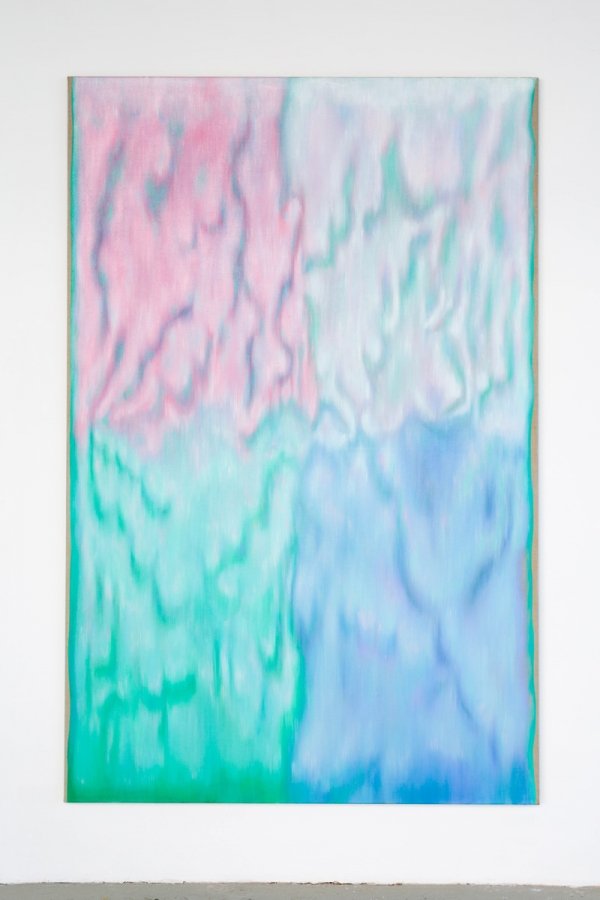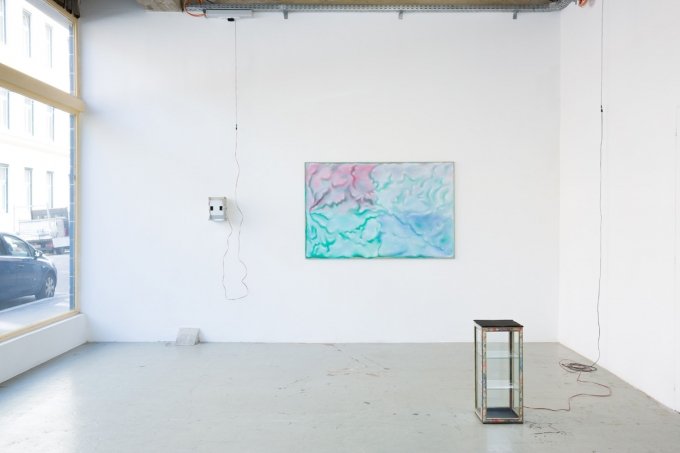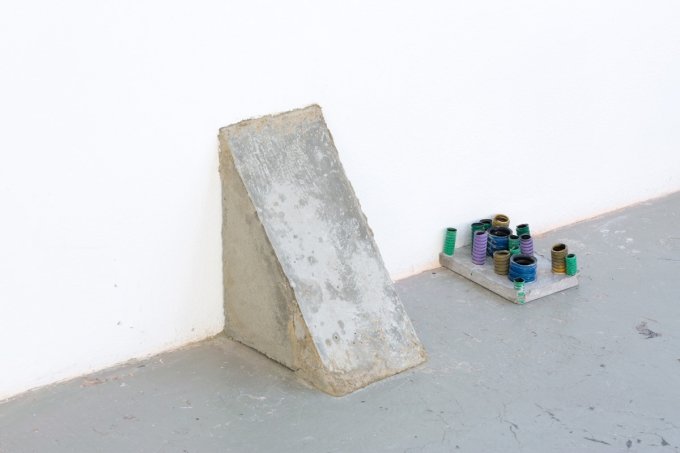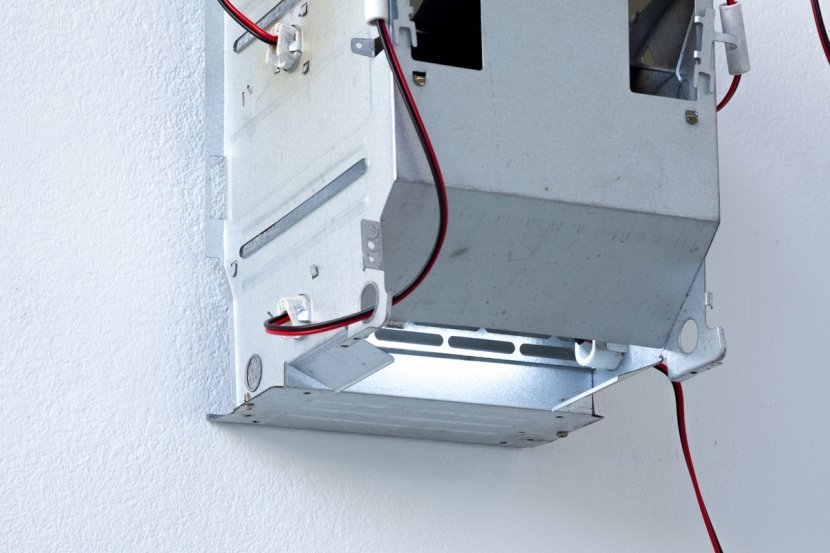Antonio Della Corte und Vika Prokopaviciute im Skulpturinstitut, Wien
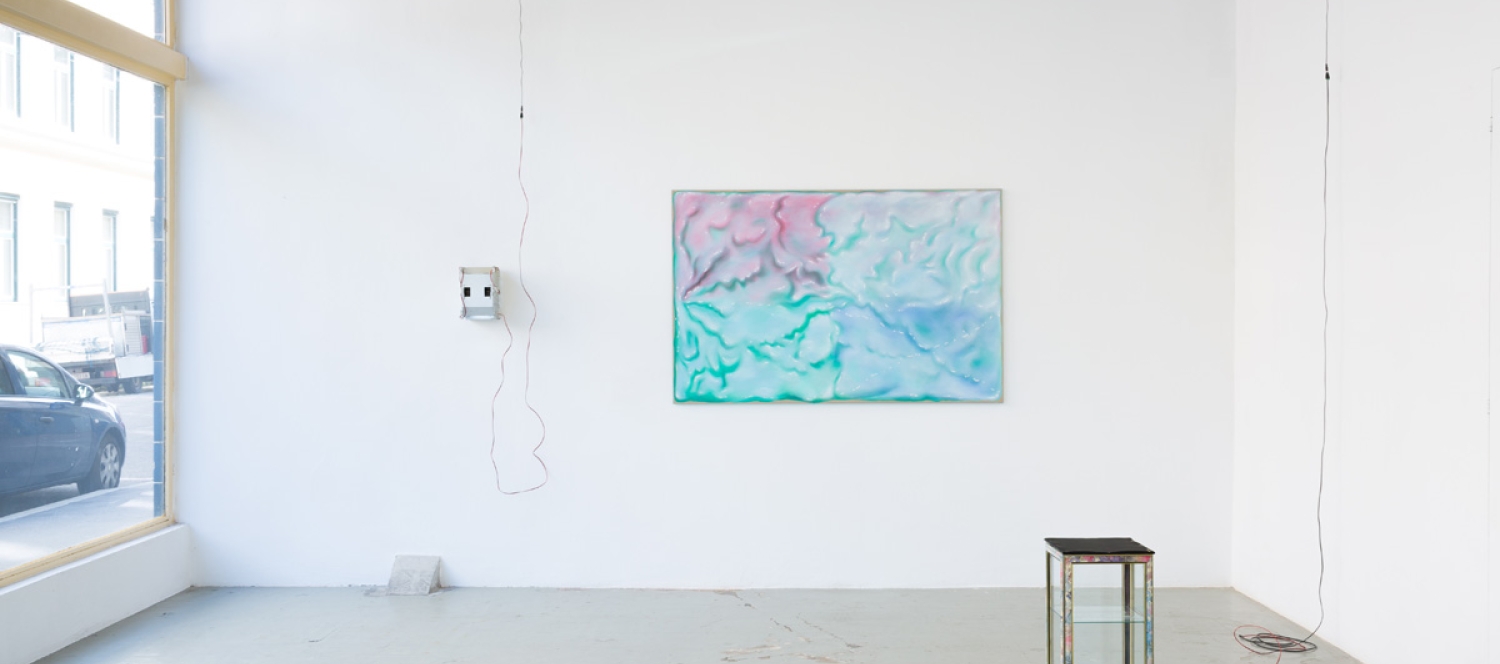
Skulpturinstitut
Paulusplatz 5, 1030 Wien
Österreich
KünstlerIn: Antonio Della Corte, Vika Prokopaviciute
Titel: No x in nixon
Datum: 12. September – 16. September 2019
Fotografie: Courtesy the artists | Photo: Flavio Palasciano
Notiz: Eingeladen von Leena Lübbe
Ausstellungstext:
The mouth opens and excretes a wet bubblegum that gives witness to the mountainy landscape of the last chew. Flop. Slowly expanding while distorting proportions embrace the space and hit a vitrine. "Hi what if we coexist for some time?" A swirl contracts the mass and sucks it in an abandoned pipe. Bye.
Leena Lübbe
-----------
Nix that—there is an “x” in “nixon.” As a symbol, rather than a letter, “x” represents negation, as well as deletion and absence. “No x in nixon” is a palindrome that x-es out itself. Like the presentation of works by Antonio Della Corte and Vika Prokopaviciute at Skupturinstitut, it is perfectly symmetrical, evenly distributed. Their exhibition is set up as if mirrored and evenly paced. Artist Leena Lübbe invited the two artists, who didn’t previously know each other, to show in the Skupturinstitut’s symmetrical space. The “x” is confusing; it negates even its own meanings. Prokopaviciute, a painter, noted as much when she wrote: “[on] ballot papers or some application form… you have to put X as your choice. I would read it as ‘no way!!!’… Or XX. Or ‘kiss kiss.’” It’s tempting to read shared connections between the two artists showing together, just as we may wish to decipher whether an “x” without context is a kiss or a “no.” Prokopaviciute’s cyan and magenta waves recall the CMYK scale, and alongside Della Corte’s sculptures with slender tubes of scanner-like LED lights, I find myself thinking about components of the digital image, and of spectrums of color across both light and pigment. Both artists’ works feel at once meticulously crafted, and absent any human hand: at first sight, Prokopaviciute’s paintings may look as if airbrushed or even printed, with perfectly smooth gradients. Della Corte’s sculptures are assembled from found objects that are seamlessly integrated with one another—tubes of light lining vitrines or mounted on brass. In this sense, Lübbe’s pairing and the artist’s even, symmetrical hang asks us to peruse for connections: a word which Merriam-Webster defines as both to study carefully and to look through casually, a word that x-es out itself. At the same time, the show refutes any simplistic connection, reminding of our desire to see patterns where there are none, and negating its own invitation to find them.
Emily Watlington

